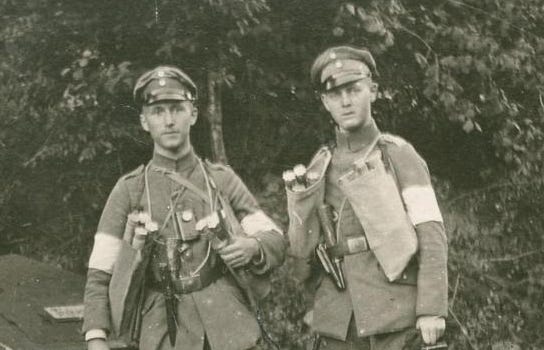Ernst Jünger on the Speed of Attacks (Part III)
A translation of Über Angriffsgeschwindigkeit
The following post concludes the three-part serialization of a translation of an article written by Ernst Jünger soon after the end of the First World War. It was published, under the title On the Speed of Attacks [Über Angriffsgeschwindigkeit] in the issue of the Military Weekly [Militärwochenblatt] published on 15 May 1923.
There is a lot of truth in the view of the partisans of methodical attacks, who argue for combatting systematic resistance ought a systematic and unhurried way. Moreover, as weapons become more effective, as they surely will, attackers will have to exercise a greater degree of care in the ways that they conduct attacks.
What does this mean to the leader? On the one hand, he knows that an increase in rapidity might might cause a rapid attack to degenerate into a slaughter of his best forces, on the other, that excessively systematic attacks become ends in themselves, thereby endangering the great purpose of the tactical penetration of the deep zone: operational exploitation [die Operation.] This is a serious dilemma.
This is where battlefield experience comes in. We, as seasoned practitioners, are able to use our experience to resolve this contentious question as well as to recognize its character as an obviously theoretical product of abstract thought. Nonetheless, when the implications of battlefield experience are applied to training, they are of great actual value.
Experience teaches that the construction of the deep zone is never uniform, but, for various reasons, full of brittle positions. To a large extent, the attacking leader can identify such fragile positions according to the distribution of the defender’s forces, or on the basis of apparent morale, which can often lead to local success and which recent military science has begun to study. The attack flows forward through such positions, at first because of the decision of the leader, who places his main effort [Schwerpunkt] upon one of them, following only the rule of seeking those places where resistance is weakest, and finally by threatening firmly established elements, which are working with all of their might to protect themselves against a systematic attack that has grabbed hold of them.
Thus we see that we should use two kinds of attacks in the deep zone, the systematic overwhelming attack, which proceeds step by step wherever organized resistance demands it, and the attack unleashed without limit, in which the will to victory and the attacker’s plan rips the last vestiges of the defense into a rearward-flowing whirlpool. When used in mutually supporting ways, both types of attack lead to success. Each is only correct in its own place; the correct and direct employment is an art, and, as such, unteachable, but dependent upon the innate instinct of the leader.
Jünger, Lieutenant in Infantry Regiment 16


